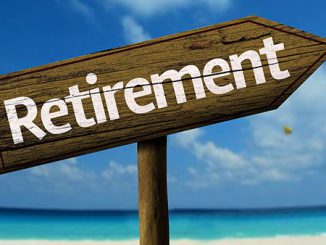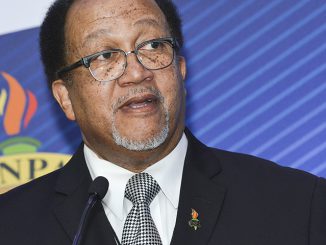
By Hazel Trice Edney
A recent study has outlined a disturbing trend across the nation: Increasing retirement woes among Black people, coming from several angles that indicate some could choose to work longer or seek more palatable options for savings and income.
Either people aren’t feeling on-track to retire, they’re worried about outliving whatever savings they are able to accrue or their jobs don’t offer fair retirement plans for people of color. These being common fears in the Black community, some just breeze over the thought of retirement as a pipe dream.
“Black and Hispanic workers have significantly less access to employer-sponsored retirement plans than do white counterparts, exacerbating economic inequity and hampering the ability of people of color to build financial security later in life, according to researchers,” AARP reports. “Among private sector employees ages 18 to 64, more than 53 percent of African Americans and about 64 percent of Latinos do not have access to a workplace retirement plan, compared with about 42 percent for white workers and 45 percent for Asian Americans, a July 2022 report from the AARP Public Policy Institute found.”
According to the latest U.S. Census data, more than 55.8 million adults are older than 65. That is nearly 17 percent of America’s population that is “retirement age.” Yet only half of Americans even have access to retirement plans. And although we know well what the gender gap is, what isn’t talked about enough is the retirement gap. Generally, studies on savings show that the average Black family has lower savings than the disparity between the average U.S. family. It’s unsurprising, then, that 54% of Black Americans don’t have enough savings to retire – whether it be from system inequalities or otherwise.
All studies and reports on retirement are saying the same thing: People are worried about outliving their retirement savings. The retirement crisis is hitting all of the country, but as usual, disproportionately impacting Black and other racial minority communities. Nearly 40 percent of independent savers, specifically, aren’t feeling on-track to retire. Independent savers are individuals who do not have access to a retirement plan through their employers. Many in the Black and Latino communities fall under the independent saver category. Therefore, for many in these communities, retirement planning gets put on the backburner as more urgent expenses and matters arise.
But there are now new financial tools that every person can use to begin retirement savings. Recently, the financial industry recognized this issue and started to rollout new products that will open up access to professionally managed retirement vehicles at a lower cost and without the need for a workplace-based retirement plan.
For example, BlackRock recently launched the industry’s only suite of target date ETFs (Exchange-traded Funds), which is a new investment tool aimed at curbing the growing number of people who do not have any retirement savings plans, or access to such. Investors that choose this new product will be able to easily select a fund closest to their target retirement date and make regular contributions as their own finances allow. This allows for recurring deposits, but also allows for more choice. Meaning if life happens and an unexpected expense comes up – which will certainly happen – and there’s nothing left over for the month to invest, that’s okay. However, this investment is professionally managed and is taken care of to make sure it’s stable as retirement nears.
According to BlackRock’s Read on Retirement report, 47 percent of independent savers lean on cash to build their retirement, creating a missed opportunity for potential investment growth which is important to achieving retirement goals. These new ETF funds allow for savers that might typically rely on stashing cash to instead put that into these ETF funds that will invest in a broad portfolio and turn out even more money.
Such strategies are often in line with initiatives such as Rev. Jesse Jackson’s Wall Street Project, which encourages the financial industry to open up and reach out to communities that may not necessarily be aware of alternatives to their personal savings that they may need from day to day.
“If Corporate America could see the vast potential within our underserved minority communities, would Wall Street provide access to opportunities for economic growth and stability?” Rev. Jackson asks in a statement.
All of these retirement tools are built off of the idea that in order to encourage more retirement saving, we need to make it as easy as possible for people to build their nest egg. Retirement tools like these are for the people that don’t have workplace retirement plans, those looking to complement their existing 401(k), or people that just want to boost their confidence in their retirement potential.
Most Americans are nervous; even stressed about retirement, savings, and finances in general. This is especially true for the Black community. These products may be the first of many from Wall Street aimed at further providing transformational solutions to the retirement burdens many have been feeling over the years.
For equitable economic contributions to family and to American society regardless of race or age, retirement savings and income must become straightforward and possible for everyone.
“The road to shared economic security travels through two-way trade, where all are included, and none are left in the margins of the marketplace,” Rev. Jackson states. “Industry by industry, the quantifiable gaps in opportunity and in access to capital for people of color-owned businesses define our agenda.”






